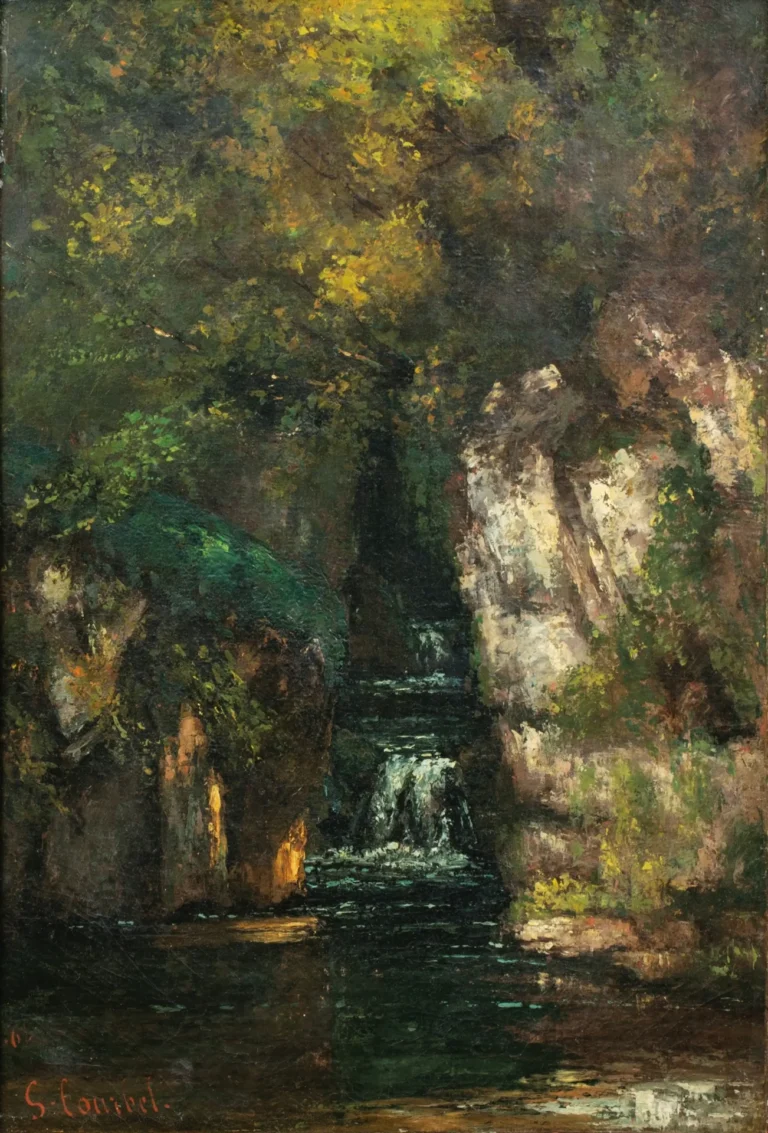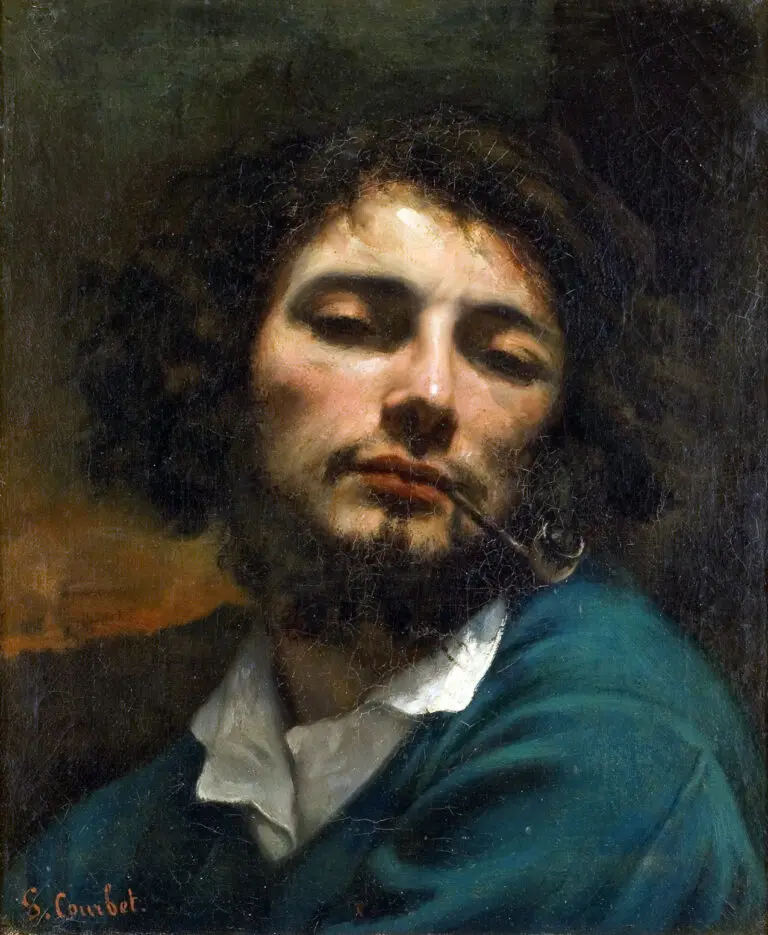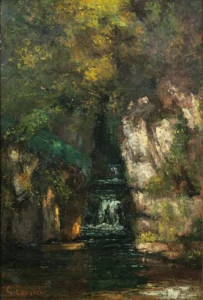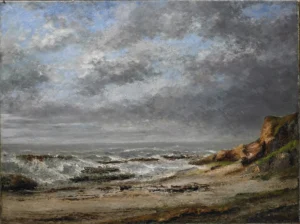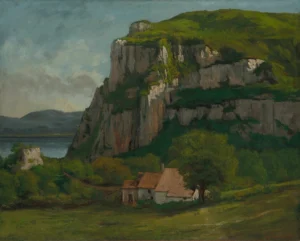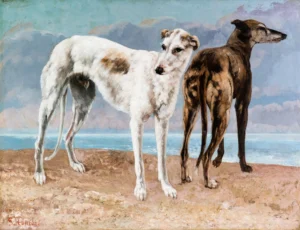A Waterfall Near Ornans (1865)
Gustave Courbet's A Waterfall Near Ornans, painted in 1865, stands as a testament to the Realism movement in 19th-century France. Measuring 55.8 x 38 cm, the painting beautifully depicts a cascading waterfall set against the serene backdrop of Ornans, the artist's hometown. This piece exemplifies Courbet's dedication to portraying the natural world authentically, striking a departure from the romanticized subjects typical of earlier artistic traditions.
Year 1865
About the Artwork
The story behind A Waterfall Near Ornans reflects Courbet's desire to break free from the constraints of traditional art. During the mid-19th century, France was undergoing significant cultural and social change, and Courbet sought to capture the essence of the world as he saw it. This painting, created in 1865, channels his fascination with nature and the environment surrounding his hometown of Ornans. Not only does it reveal his artistic philosophy, but it also honors the quiet beauty of rural life that he felt was often overlooked. The work asserts the importance of painting ordinary scenes with the same respect as grand historical narratives. As such, it not only represents the scene it depicts but also serves as a significant statement of the era's evolving artistic sensibilities.
Did You Know
Liked what you see? Add it to your collection.
Enjoyed reading? Share it.
... continued
A Waterfall Near Ornans
Artist and Style
Gustave Courbet was a leading figure in the Realism movement of 19th-century French painting. He was known for his commitment to painting only what he could see, rejecting academic conventions and the Romanticism of his predecessors.
Title and Date
The painting is titled A Waterfall Near Ornans and was completed in 1865.
Medium and Dimensions
The painting is executed in oil on canvas. The dimensions of the original work are 55.8 x 38 cm (22 by 15 inches).
Location
The original painting is part of the collection at the Yale University Art Gallery.
Description
The work depicts a waterfall in a natural setting near Ornans, a town in eastern France where Courbet often drew inspiration. The painting reflects Courbet's focus on realistic and everyday subjects, characteristic of his Realist approach.
Significance
Courbet's works, including A Waterfall Near Ornans. were significant for their departure from traditional artistic themes and their emphasis on realism. His paintings often highlighted the mundane and the natural world, influencing later art movements such as Impressionism and Cubism.





